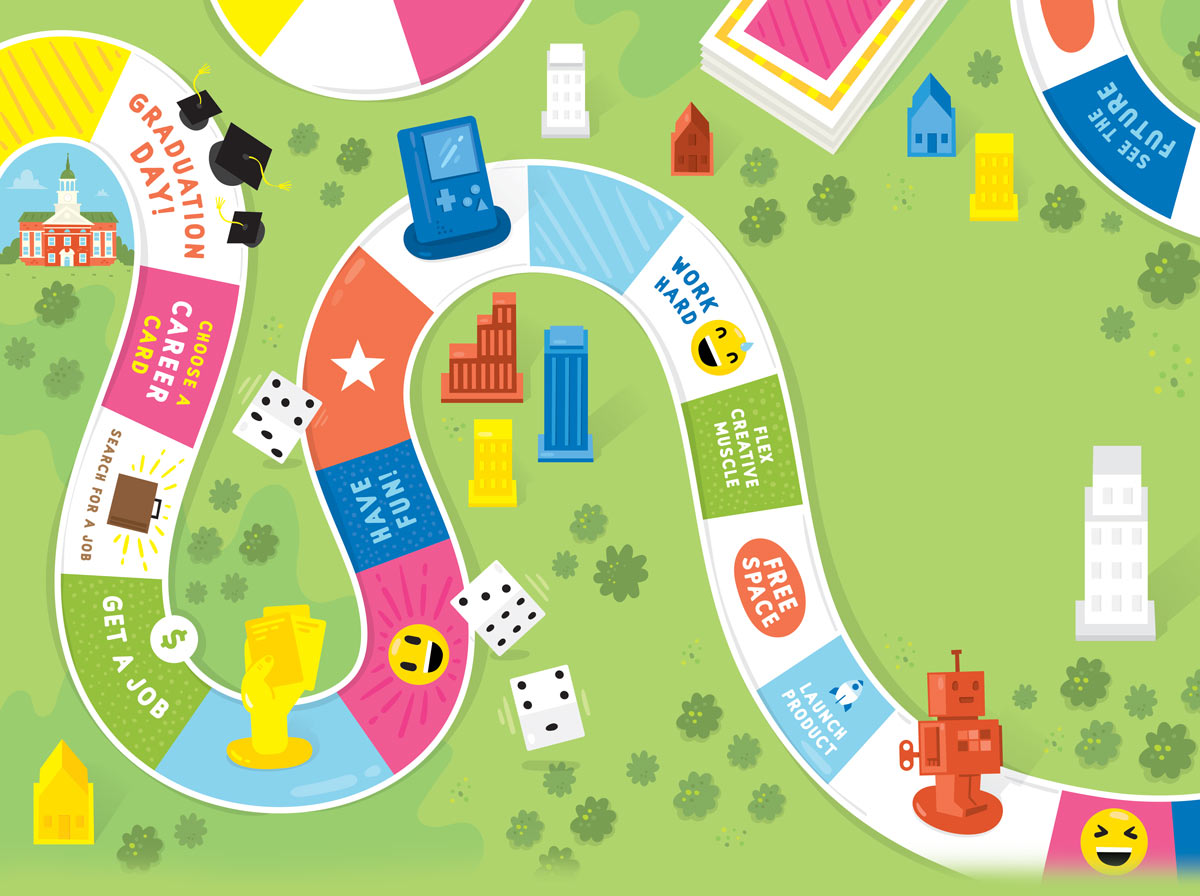
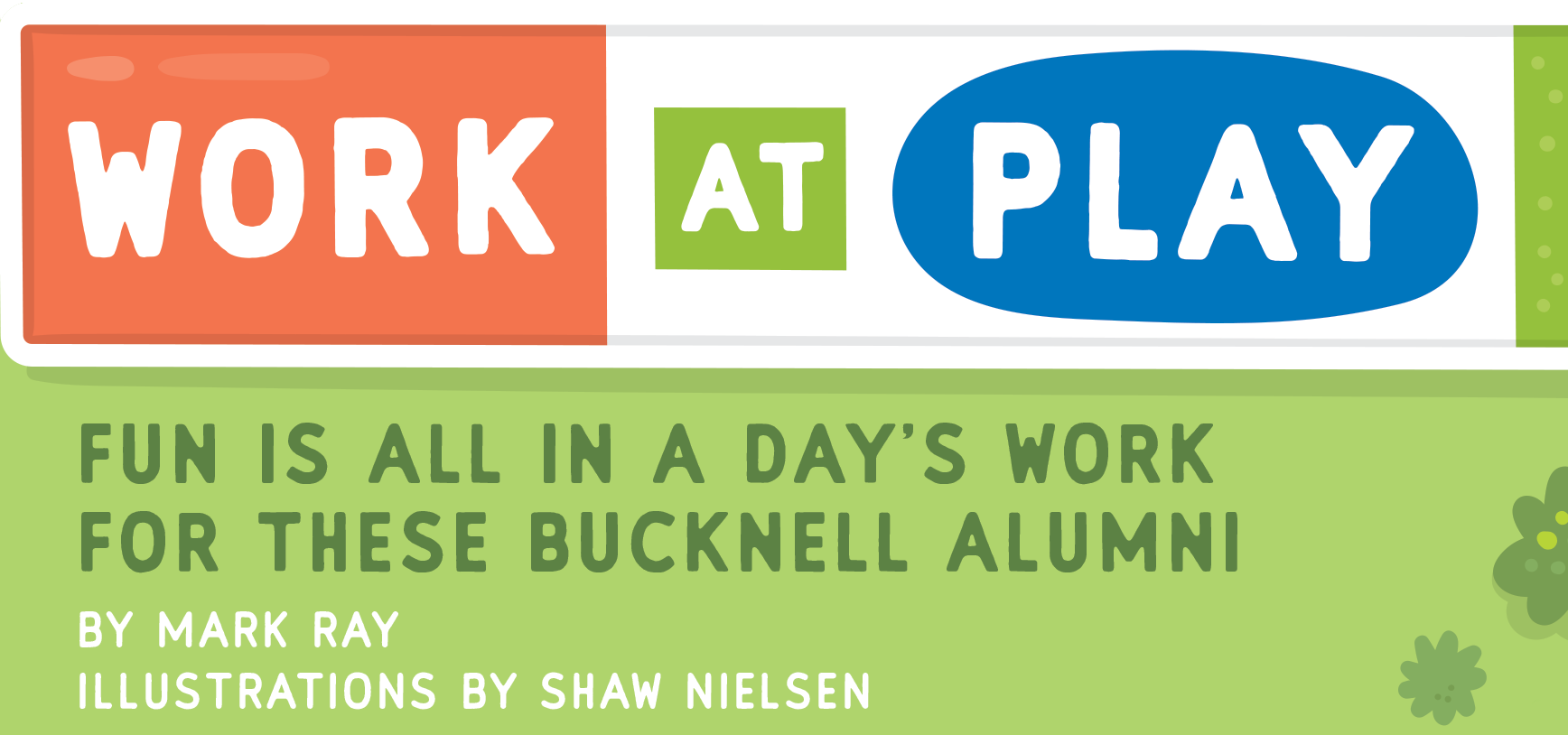
Work at Play
“I don’t get it,” he says. “What’s fun about playing with a building?”
The Functions Behind the Fun
Take Rick Hoskinson ’01, for example. He’s the technical lead for the game engine behind Riot Games’ wildly successful video game League of Legends (LoL). Despite working on a game populated by assassins, fighters, mages and marksmen, he spends most of his time with actual — and hopefully less dangerous — people.
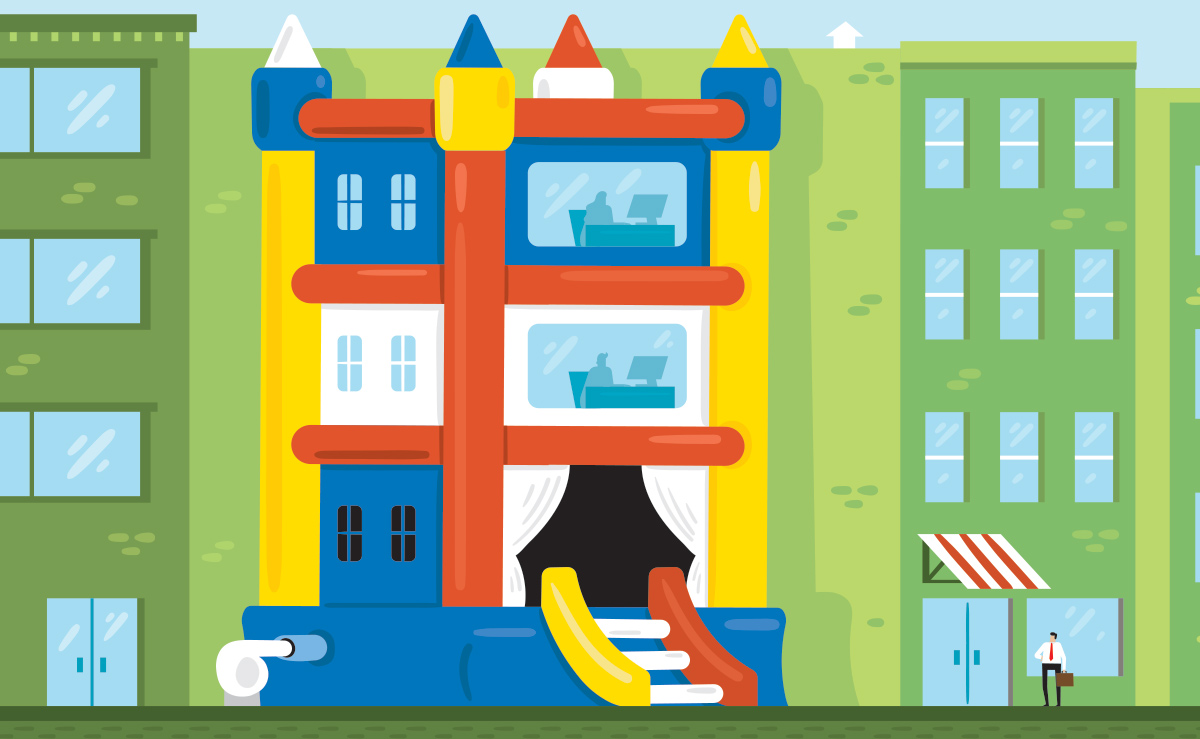
Emma Miller ’20 can relate. A content editor with card-game company What Do You Meme?, Miller spends much of her time knee-deep in a Google Doc that tracks the progress of each game from planning through production. She ensures content is handed off properly and that nothing gets lost in translation — tasks people in any business can relate to. She also edits game cards and writes instructions before they go into production. “I’ve looked at, like, 1,500 cards in a single day, making sure everything is spelled correctly and certain content isn’t included and stuff like that,” she says. “My eyes will bleed.”
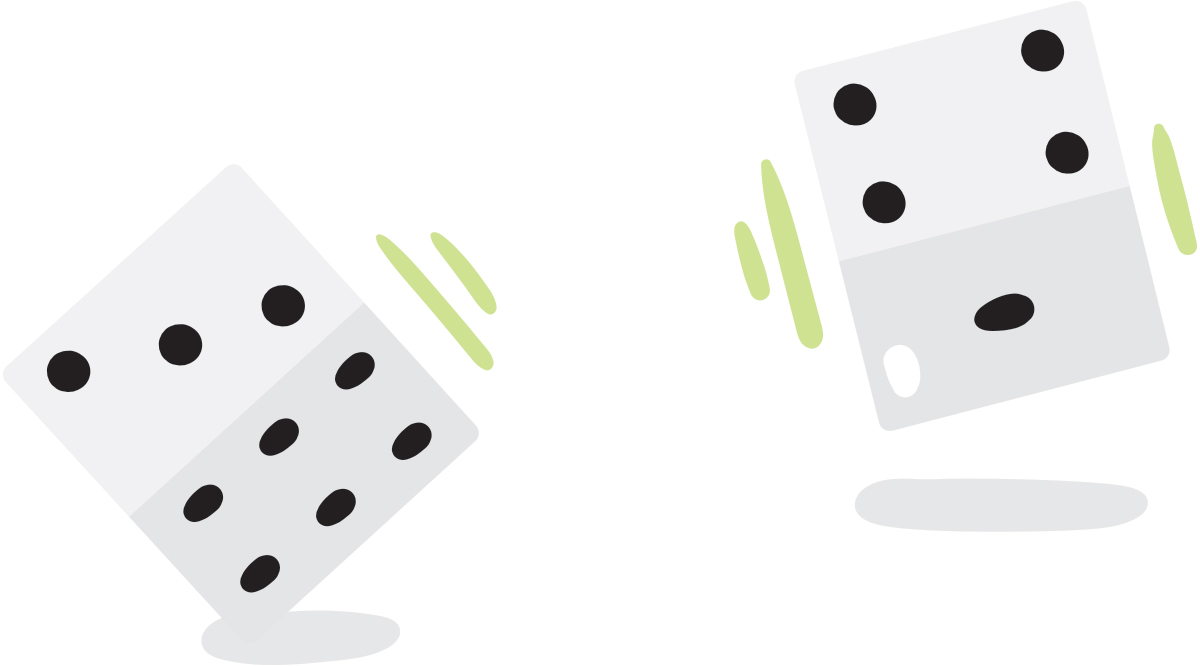
The COVID Bump
Tara Badie ’93 credits COVID-19 with much of that growth. “When things are bad, parents want to keep their kids happy,” she says. “On top of that, during the pandemic especially, they needed things to keep them busy, because parents were trying to work from home while teaching and everything.”
She also anticipates a wave of new products from people who had plenty of time during pandemic lockdowns to dream up amazing new toys. “We’re expecting a huge creativity boom in the next year or so,” she says.
Finding Fun at Work
For many professionals, trade shows, Google Docs and team meetings rarely evoke a sense of fun. Badie’s fun stems from her coworkers and from the products she publicizes. “I think part of marketing is really loving the product that you’re selling,” she says. “I’ve worked on some products that I haven’t been a fan of, and it’s harder to get that excited.”

Hoskinson doesn’t play LoL at work, but he never forgets that he creates fun for a living. He’s been playing video games since he was a kid — the Final Fantasy games were early favorites — so fun informs everything he does. “A lot of my career’s been focused around that shared joy of knowing what kinds of products I’m making and really being connected to the actual outputs in a way that, if I were working on industrial CNC software, I wouldn’t be,” he says.
Fun spills over from the workplace to life outside the office. Because toy and game companies tend to attract people who like to have fun, colleagues end up playing together after hours and on weekends. “I think a lot of people are very connected to the concept of play, and it’s something that they do very naturally,” Hoskinson says.
The Future of Fun
The toy and game industry isn’t going away, and it’s definitely not standing still. That means people like Hoskinson, Badie and Miller have to keep an eye on tomorrow even as they’re handling today’s tasks.
Despite media hype about the metaverse and Web3, Hoskinson thinks video games are entering a phase where they’re maturing, not transforming. “I think what we’ve got is actually a really strong foundation of solid gameplay — the kinds of ideas that will keep people happy and engaged for their whole lifetime,” he says.
What comes next, he predicts, is an explosion in content creation. “The biggest games we have are still 8 kilometers by 8 kilometers, so there’s 64 square kilometers of space you have to fill with interesting stuff to do,” he says. “Imagine trying to blow that up to the next level, where you’re trying to explore the entire state of Pennsylvania, for example.” (If you’re keeping score, that’s 119,283 square kilometers.)

The future also looks bright for party games like the ones Miller works on. As people return to in-person gatherings, she thinks they’ll look for games they can take along. “We’re working on a lot more party games that fill that need,” she says.
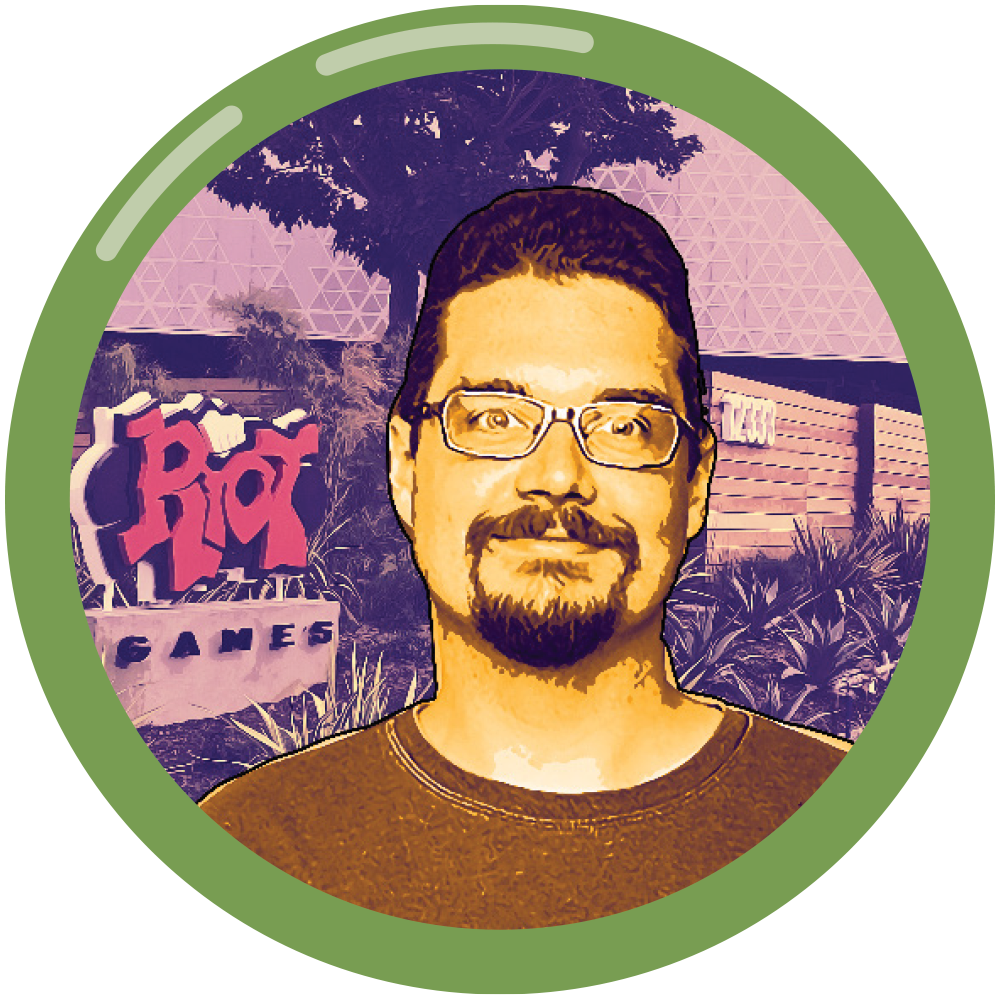
Riot Games
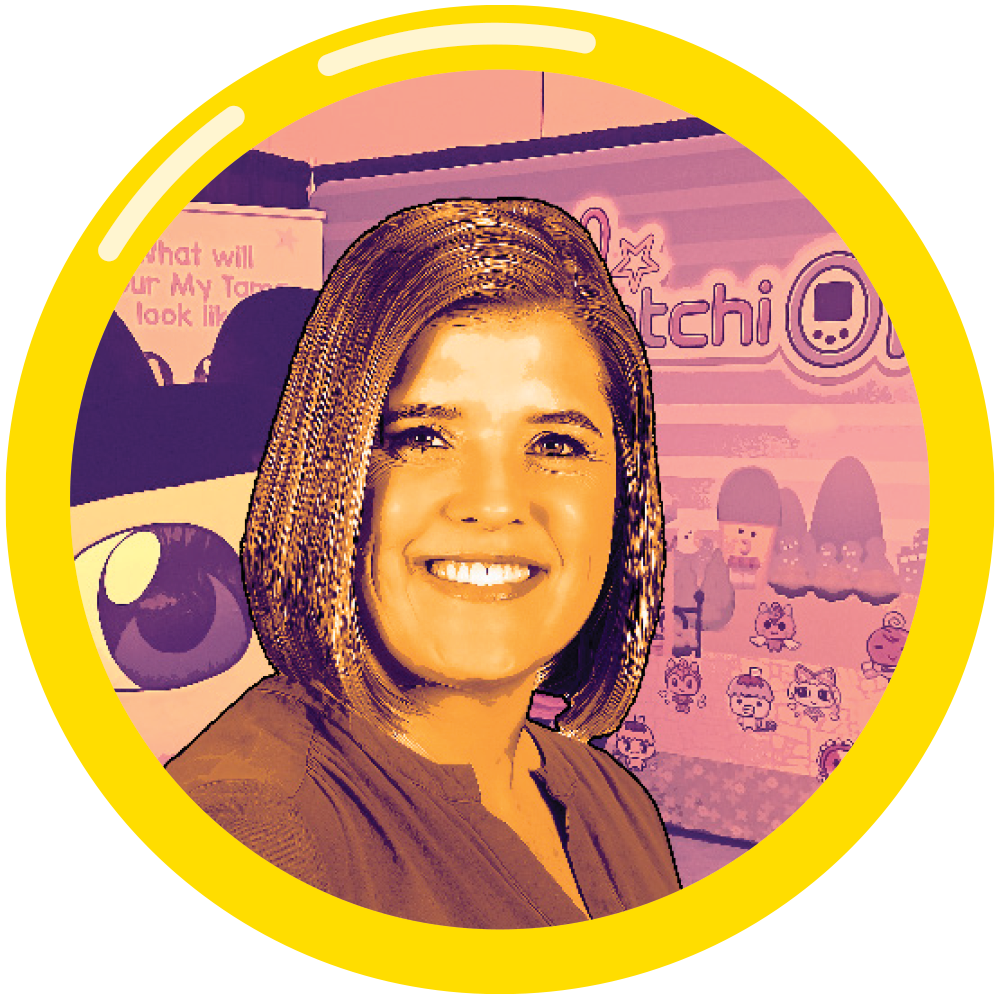
Bandai America
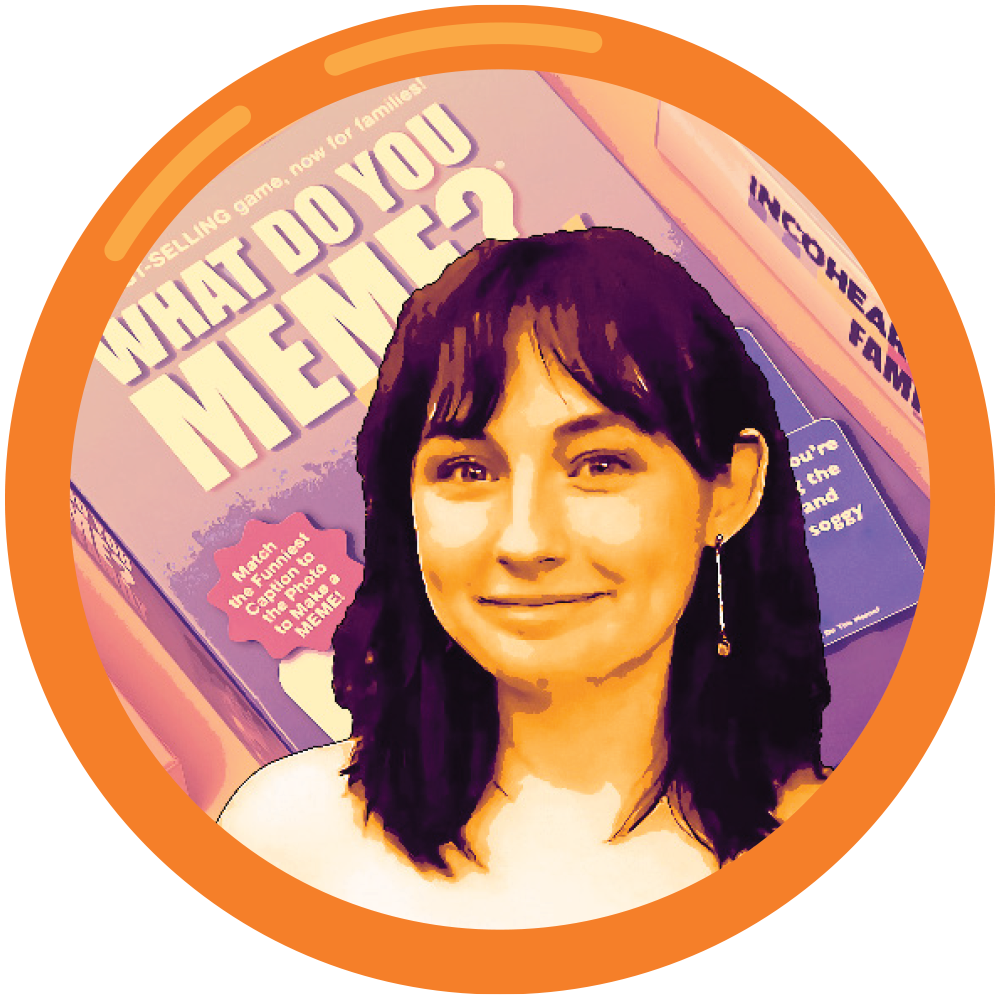
What Do You Meme?

From College to Career
Miller first encountered her company’s games at Bucknell — the original What Do You Meme? debuted the year she enrolled — but that’s not the only connection to her Bucknell experience. As a creative writing major, she learned how to express ideas in fresh ways. “Developing that creative muscle was incredibly helpful, because when you’re writing a tagline, when you’re coming up with a game, it’s really easy to fall into these patterns of what you’ve seen a million times before.”
Also beneficial was her work as a stage manager in Bucknell’s theatre program. Through that experience, she developed organizational skills she uses every day as a content editor.
For Badie, the single marketing class she took for her management degree inspired a career change after she’d spent a few years as an internal auditor. Her class on Japanese business was also beneficial — up to a point. “I now work for a Japanese toy company, and the only Japanese words that I can say are ‘Ohayou gozaimasu’ — which is ‘good morning’ — because we started class every day with it,” she says. “Now my friends in Japan laugh at me when I say it. They tell me it’s good, but they still laugh.”
Bucknell had the most profound impact on Hoskinson. Although he’d always aspired to create video games, he came to college with no programming experience. His high school didn’t have a computer lab, and he’d never even heard of the programming languages his peers were already using. He got up to speed quickly thanks to small class sizes and accessible professors. “I was at the level of my peers after my freshman year,” he says. “By my junior and senior year I was the one helping them with their homework assignments.”
He particularly remembers the time he wanted to do a graphics assignment on some proprietary software his heroes in the industry used. His professor talked him out of it, emphasizing the importance of focusing on learning underlying principles. “I’ve worked on a lot of graphics code in my life and I’ve been through probably 30 or 40 different, proprietary ways of doing it,” he says. “I’m glad I didn’t learn at the surface level; I’m glad I went deep and understood why they were making those things the way they did.”
Despite their different paths, passions and perspectives, all three share the same “why” as anyone who works in the toy and game industry: Fun truly is fundamental.